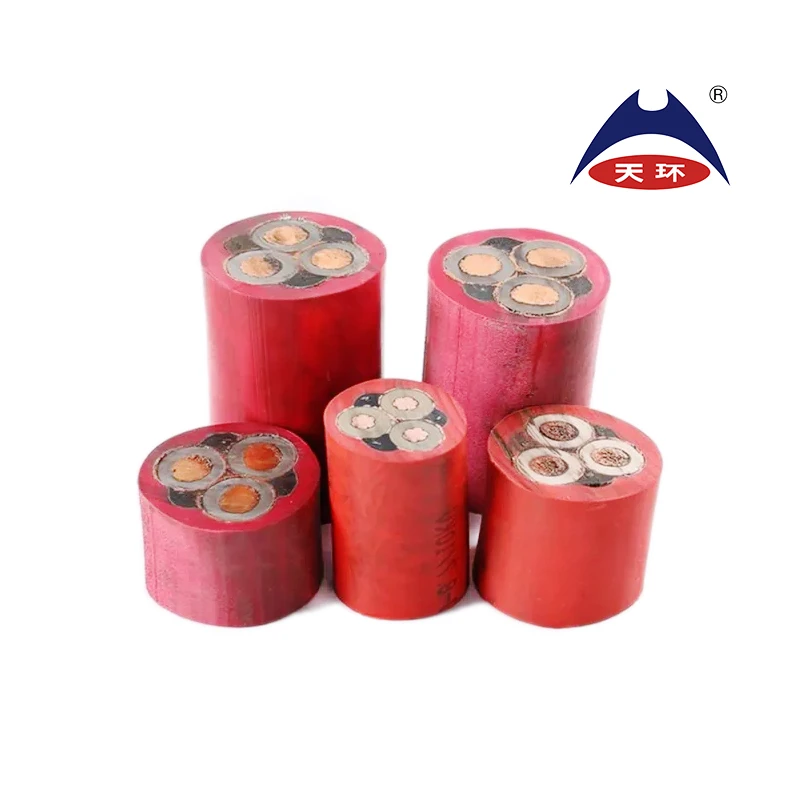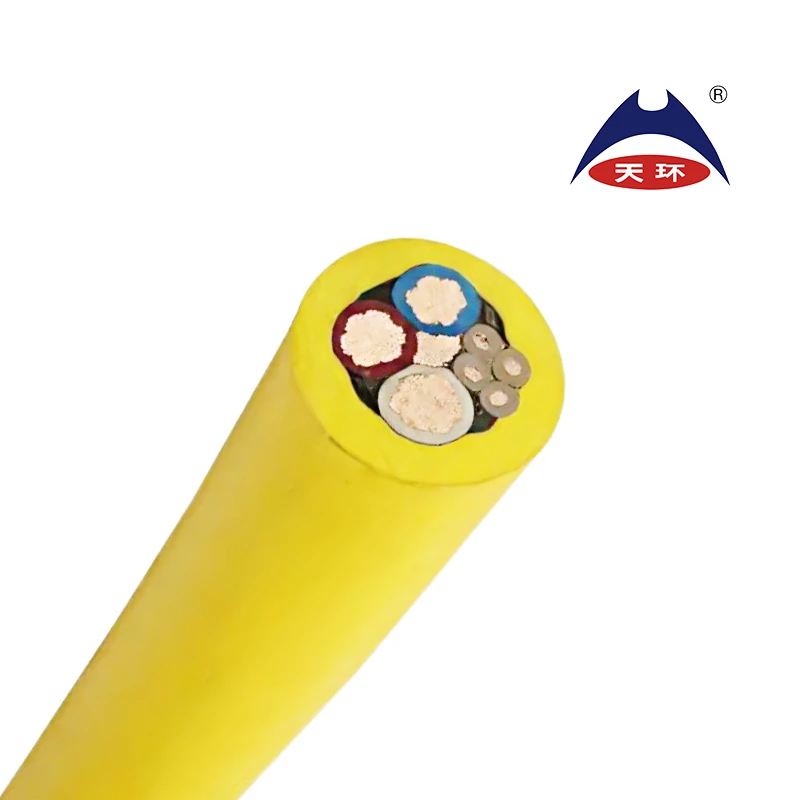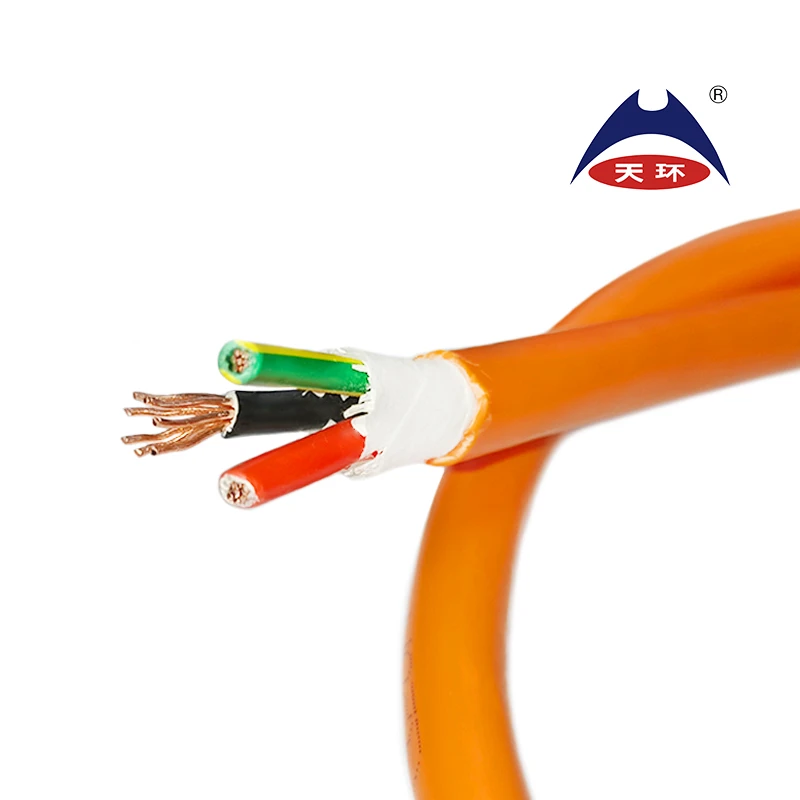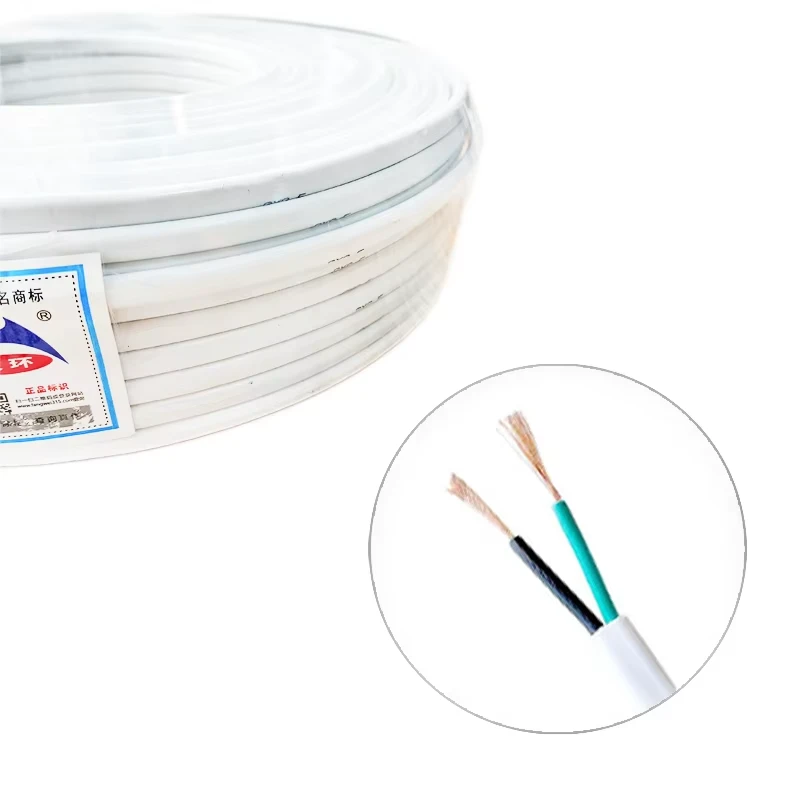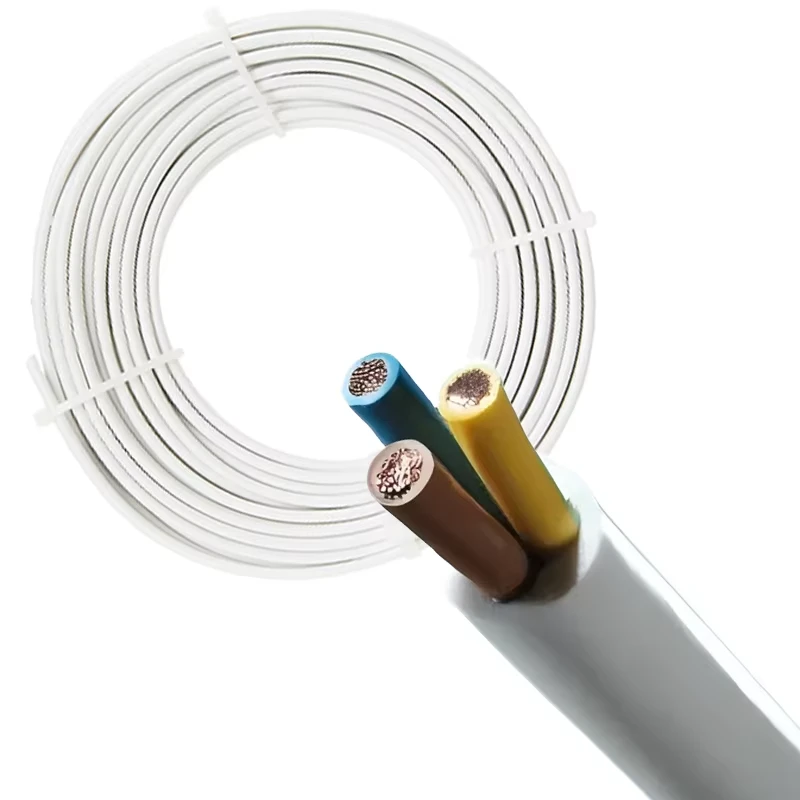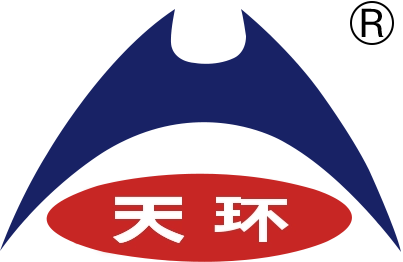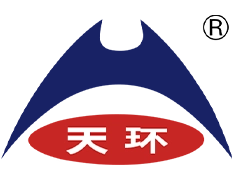
OEM Wire Building: Custom, Best Quality Building Wire
Navigating the Landscape of OEM Wire Building: Trends and Core Principles
In the rapidly evolving global construction and infrastructure sectors, the demand for specialized and high-performance electrical wiring solutions is reaching unprecedented levels. This surge is driven by stringent safety regulations, growing emphasis on energy efficiency, and the increasing complexity of modern building designs. At the forefront of this industrial transformation is the concept of oem wire building, a critical process that involves the design, manufacturing, and supply of custom-engineered cables specifically tailored to the unique requirements of various construction projects. Unlike off-the-shelf solutions, OEM wire building provides bespoke technical specifications, ensuring optimal performance, enhanced safety, and extended operational lifespan. This strategic approach caters to the intricate needs of large-scale commercial complexes, residential developments, and critical infrastructure, where standard wiring might fall short of rigorous performance and compliance benchmarks. The industry trend is moving towards materials that offer superior fire resistance, low smoke emission, and zero halogen properties, addressing critical safety concerns in densely populated or sensitive environments. Moreover, the integration of smart building technologies necessitates cables capable of reliably transmitting data and power with minimal interference and maximum efficiency, further emphasizing the need for precision-engineered OEM solutions.
For discerning project managers, electrical engineers, and procurement specialists, understanding the nuances of these custom solutions is paramount to mitigating risks and ensuring project success. Our focus on oem wire building emphasizes not just the physical product, but the entire value chain—from initial consultation and design to advanced manufacturing and post-delivery support. This includes a deep dive into materials science, sophisticated extrusion techniques, and rigorous quality assurance protocols that collectively define the superiority of a custom-manufactured cable. A prime example of such advanced engineering is the EN50525-3-11 H05Z1Z1-F HFFR insulated and sheathed connecting cable, designed with multi-stranded bare copper conductors for optimal conductivity and safety in house building electrical systems. This product exemplifies the commitment to innovation, fire safety, and environmental responsibility that characterizes leading manufacturers in the custom cable industry. By providing robust solutions that conform to international standards, manufacturers are able to meet the exacting specifications of modern construction, contributing significantly to the structural integrity and operational efficiency of buildings worldwide. The market for custom building cables is dynamic, requiring manufacturers to stay abreast of technological advancements and evolving regulatory frameworks, ensuring their products not only meet but exceed contemporary performance expectations.
The Advanced Manufacturing Process of OEM Wire Building: A Deep Dive into Precision Engineering
The creation of high-quality oem wire building solutions, such as the EN50525-3-11 H05Z1Z1-F cable, is a meticulously engineered process that combines cutting-edge technology with rigorous quality control. It begins with the selection of premium-grade raw materials. For conductors, multi-stranded bare copper is chosen for its superior electrical conductivity and flexibility, crucial for ease of installation and long-term performance. The insulation and sheathing materials, particularly for products like H05Z1Z1-F, are composed of Halogen-Free Flame Retardant (HFFR) compounds. These advanced polymers are engineered to release minimal smoke and no corrosive gases when exposed to fire, significantly enhancing safety in enclosed spaces and protecting sensitive electronic equipment. The manufacturing process typically involves several critical stages. First, the copper rods undergo a precise wire drawing process, reducing their diameter to the required gauge while simultaneously increasing their tensile strength. This is followed by annealing, a heat treatment that restores ductility, making the copper flexible enough for subsequent processing and installation.
Next, individual strands of copper are twisted together in a process known as stranding, forming the multi-stranded conductor. This enhances the cable's flexibility and fatigue resistance, vital for dynamic installations. The insulated core is then created through an extrusion process where the HFFR compound is precisely applied over the conductor. Sophisticated extrusion machinery ensures uniform thickness and concentricity of the insulation, which is critical for maintaining dielectric strength and preventing electrical breakdown. Following insulation, multiple insulated cores may be twisted or laid up to form the cable core, depending on the final cable structure. Finally, an outer sheath of HFFR compound is extruded over the entire cable assembly, providing mechanical protection and additional fire safety properties. Throughout this entire workflow, continuous in-line quality checks are performed, including spark testing to detect any insulation flaws, dimensional measurements, and conductor resistance verification. Finished cables undergo a battery of final tests in accordance with international standards such as EN 50525-3-11, IEC 60332 (flame propagation), IEC 61034 (smoke density), and IEC 60754 (halogen acidity). This comprehensive testing ensures that each meter of oem wire building meets the highest benchmarks for electrical performance, mechanical integrity, and crucial fire safety, making them ideal for modern residential, commercial, and industrial building applications. The meticulous adherence to these manufacturing and testing protocols ensures a service life often exceeding 25 years under typical operating conditions, offering significant advantages in terms of reduced maintenance and enhanced long-term reliability.
Technical Parameters and Performance Benchmarks for Building Wire Solutions
Understanding the technical parameters of oem wire building is crucial for ensuring system integrity and safety. Our EN50525-3-11 H05Z1Z1-F cable, a premier example of a robust building wire, is engineered to meet specific performance benchmarks that go beyond basic electrical requirements. The "H05Z1Z1-F" designation itself provides a wealth of information: "H" signifies harmonization, "05" indicates a rated voltage of 300/500V, "Z1Z1" refers to the HFFR (Halogen Free Flame Retardant) compound used for both insulation and sheathing, and "F" denotes a flexible conductor. This makes it an ideal choice for internal wiring in various building types, particularly where fire safety is paramount. Key electrical parameters include conductor resistance, which must be extremely low to minimize power loss and heat generation, ensuring energy efficiency. Insulation resistance, conversely, must be exceptionally high to prevent leakage currents and ensure electrical isolation. The cable's current-carrying capacity is determined by its conductor cross-sectional area and operating temperature, critical factors for preventing overheating and potential fire hazards.
Beyond electrical properties, mechanical robustness and environmental resilience are also vital. The cable’s ability to withstand bending, tension, and impact during installation and throughout its service life contributes to its longevity. Thermal performance, specifically its behavior under high temperatures and in fire conditions, is a standout feature of HFFR cables. They exhibit low smoke emission, minimal corrosive gas release, and self-extinguishing properties, significantly enhancing evacuation safety and reducing damage to infrastructure. To illustrate the typical specifications and performance expected from premium oem wire building, below is a table summarizing key parameters, often sought by those looking to `buy wire building` or `buy wire for building` that meets stringent standards. This data provides a comparative overview, emphasizing why investing in a `best building wire` with verified specifications is essential for long-term reliability and adherence to safety protocols in any modern construction project. Such detailed specifications allow for precise system design, ensuring that the selected `custom building cable` or `custom building wire` perfectly aligns with project needs, from basic residential wiring to complex industrial installations, where performance dictates safety and operational continuity.
| Parameter | EN50525-3-11 H05Z1Z1-F | Standard PVC Insulated Cable (H05VV-F) | Benefit/Significance |
|---|---|---|---|
| Rated Voltage (U0/U) | 300/500 V | 300/500 V | Suitable for domestic and light industrial applications. |
| Conductor Material | Multi-stranded Bare Copper | Multi-stranded Bare Copper | High conductivity, flexibility, ease of installation. |
| Insulation/Sheath Material | HFFR (Halogen Free Flame Retardant) | PVC (Polyvinyl Chloride) | HFFR offers superior fire safety: low smoke, zero halogen. |
| Max. Conductor Temperature | 70°C (Fixed Installation), 60°C (Flexible Use) | 70°C (Fixed Installation), 60°C (Flexible Use) | Ensures safe operation under typical load conditions. |
| Min. Bending Radius (Fixed) | 4-5 x Ø (Cable Diameter) | 4-5 x Ø | Indicates flexibility and ease of installation in tight spaces. |
| Fire Performance | IEC 60332-1-2 (Flame Retardant), IEC 61034 (Low Smoke), IEC 60754 (Halogen-Free) | IEC 60332-1-2 (Flame Retardant) | Crucial for public safety in event of fire, reduced toxicity. |
| Operating Temperature Range | -15°C to +70°C | -15°C to +70°C | Ensures reliable operation across diverse environmental conditions. |
Application Scenarios and Strategic Advantages of Custom OEM Building Wire
The versatility and high-performance characteristics of custom oem wire building solutions make them indispensable across a broad spectrum of application scenarios in the modern construction landscape. From intricate residential wiring systems to robust industrial power distribution networks, the ability to specify precise technical parameters ensures optimal functionality and long-term reliability. In residential buildings, H05Z1Z1-F cables are ideal for internal wiring, especially in high-occupancy dwellings, public access areas, or smart homes, where enhanced fire safety is a non-negotiable requirement. Their HFFR properties mean that in the event of a fire, they produce significantly less smoke and no corrosive halogen gases, providing clearer escape routes and minimizing damage to property and sensitive electronics. This is a crucial advantage over traditional PVC cables, especially in scenarios where rapid evacuation and preservation of critical systems are paramount. The flexibility of these multi-stranded cables also simplifies installation in complex layouts, reducing labor costs and installation time.
For commercial and public buildings, including hospitals, schools, hotels, and shopping centers, the strategic advantages of using a `best building wire` solution like the EN50525-3-11 are even more pronounced. These environments demand cables that not only meet stringent fire safety codes but also offer exceptional durability and longevity to withstand the rigors of heavy use. The robust construction and adherence to international standards ensure consistent performance over decades, reducing the need for costly replacements and maintenance. In industrial settings, while heavy-duty power cables might dominate, internal building wire still requires the same high standards for control circuits, lighting, and auxiliary power. The HFFR nature of our `custom building cable` solutions provides an excellent defense against the spread of fire and protects vital machinery from corrosive gas damage, which can be a severe issue in industrial incidents. Furthermore, the commitment to `odm wire for building` allows for specific adaptations, such as particular jacket colors for circuit identification, specialized packaging for efficient deployment, or customized length markings, further optimizing project efficiency. The inherent low smoke and halogen-free properties also contribute to a healthier indoor air quality during and after installation, making them an environmentally responsible choice for sustainable building practices, and a key consideration for clients seeking `cheap building cable` that does not compromise on safety or performance.
Customization and Partnership Models: Beyond Standard OEM Wire Building Solutions
In today's complex construction ecosystem, a one-size-fits-all approach to wiring is rarely sufficient for achieving optimal project outcomes. This is where the true value of `custom wire building` and flexible partnership models, particularly in `oem wire building`, becomes evident. Leading manufacturers don't just supply cables; they offer comprehensive solutions tailored to specific project demands, whether it’s a unique cable length requirement, a specialized color coding system for complex installations, or a bespoke jacket material to withstand extreme environmental conditions. The flexibility to provide `odm wire for building` allows clients to fully leverage the manufacturer's expertise in design and engineering, transforming a concept into a tangible, high-performance product. This might involve developing cables with enhanced UV resistance for outdoor applications, oil-resistant sheathing for industrial settings, or even specific electromagnetic compatibility (EMC) characteristics for data-sensitive environments. The consultative approach ensures that every aspect of the cable's design, from conductor material and insulation thickness to overall diameter and packaging, is optimized for the intended application, leading to significant efficiencies in installation and long-term operational savings.
For large-scale projects or those with recurring needs, engaging in a strategic partnership for `oem wire for building` extends beyond simple procurement. It involves a collaborative relationship where the manufacturer acts as an extension of the client's engineering and supply chain teams. This often includes joint development efforts, where specific performance targets, adherence to niche industry standards (beyond the common IEC/EN), or integration with proprietary systems are required. Such partnerships often result in more competitive `building wire quotes` and `adss building quotes`, alongside guaranteed supply chain reliability and consistent quality. Furthermore, the ability to scale production for large volumes, while maintaining the highest quality standards, is a hallmark of a proficient OEM/ODM partner. This strategic alliance not only provides access to specialized manufacturing capabilities but also taps into a wealth of industry knowledge and experience, ensuring that the `custom building wire` supplied is future-proof and compliant with evolving regulations. This level of customization and partnership fosters trust and long-term relationships, allowing clients to confidently execute ambitious projects knowing their electrical infrastructure is supported by expertly engineered and purpose-built wiring solutions, distinguishing them from generic `famous building cable` suppliers.
Trust and Reliability: Ensuring Quality and Service in OEM Building Wire Solutions
The foundation of any successful project relying on oem wire building lies in the unwavering commitment to quality, backed by stringent certifications and a robust service framework. Trustworthiness is built through adherence to internationally recognized standards, ensuring that every meter of cable supplied meets or exceeds performance expectations. For our EN50525-3-11 H05Z1Z1-F cables, this means compliance with European norms (EN) and international electro-technical commission (IEC) standards, along with environmental certifications like RoHS and REACH, which restrict hazardous substances. These certifications are not merely badges; they represent a comprehensive quality assurance protocol embedded throughout the manufacturing process, from raw material inspection to final product testing. Each batch of cable undergoes rigorous electrical, mechanical, and fire performance tests, including vertical flame propagation tests, smoke density measurements, and halogen acid gas emission analysis. This meticulous verification ensures that clients receive a product that is not only electrically sound but also inherently safe and environmentally compliant, critical considerations for any responsible `building wire service` provider.
Beyond product quality, the reliability of a manufacturer in `oem wire for building` is also defined by its service capabilities. This includes clear communication channels, efficient order processing, and dependable logistics. A transparent delivery cycle is crucial for project planning, and reputable suppliers provide accurate lead times and regular updates on order status, ensuring materials arrive on site exactly when needed. Most `famous building wire` suppliers will also offer comprehensive warranty commitments, typically covering manufacturing defects for a specified period, providing an additional layer of assurance for clients. Our commitment extends to robust pre-sales consultation and post-sales technical support, where a team of experts is available to assist with product selection, installation guidance, and troubleshooting. For those seeking `buy wire building` solutions, this holistic approach, combining product excellence with unparalleled service, significantly enhances project execution and long-term operational success. This dedication to excellence and client satisfaction establishes a bedrock of trust, essential for sustained partnerships in the highly competitive B2B landscape, offering unparalleled peace of mind when investing in critical electrical infrastructure.
Frequently Asked Questions (FAQ) about OEM Building Wire
Q1: What are the primary advantages of HFFR (Halogen-Free Flame Retardant) cables in oem wire building applications?
HFFR cables offer significantly enhanced safety compared to traditional PVC cables, especially in enclosed public spaces. Their main advantages include low smoke emission, which improves visibility for evacuation during a fire, and the absence of corrosive and toxic halogen gases. This protects human health by preventing respiratory irritation and also minimizes damage to sensitive electronic equipment and building structures from acid gas corrosion. Furthermore, HFFR materials are typically self-extinguishing, preventing the spread of fire. This makes them ideal for environments where safety is paramount, such as hospitals, schools, airports, and underground transport systems. When considering a `building wire service` or looking to `buy wire for building`, the fire performance of HFFR is a critical differentiator.
Q2: How does `custom building wire` differ from standard off-the-shelf options?
Custom building wire is manufactured to precise specifications tailored for a unique project or application, unlike standard cables which are produced in generic configurations. This customization can involve specific conductor sizes, insulation/sheath colors, specialized materials for extreme temperatures or chemical resistance, unique outer diameters, specific length requirements, or custom packaging. For `oem wire building`, this means the cable is perfectly optimized for performance, installation efficiency, and cost-effectiveness within a particular context. It reduces the need for on-site modifications and ensures full compliance with project-specific regulatory or environmental demands, often leading to a more efficient and reliable electrical system over its lifetime compared to adapting a `cheap building cable`.
Q3: What certifications should I look for when sourcing `oem wire for building`?
When sourcing `oem wire for building`, it's essential to look for cables that comply with relevant international and national standards. For European markets, key certifications include EN (European Norm) standards like EN 50525-3-11 for the specific H05Z1Z1-F cable, and broader IEC (International Electrotechnical Commission) standards for electrical safety and performance. Environmental compliance certifications such as RoHS (Restriction of Hazardous Substances) and REACH (Registration, Evaluation, Authorisation and Restriction of Chemicals) are also crucial. Manufacturers with ISO 9001 (Quality Management) and ISO 14001 (Environmental Management) certifications demonstrate a commitment to consistent quality and responsible manufacturing processes. These certifications provide assurance of product reliability and adherence to strict quality benchmarks, which are critical factors when evaluating `building wire quotes`.
Q4: What is the typical delivery cycle for `custom building cable` orders?
The delivery cycle for `custom building cable` orders can vary significantly based on the complexity of the customization, the volume of the order, and current production schedules. For standard or semi-customized `oem wire building` products, lead times might range from 2-4 weeks. However, for highly specialized or entirely new `odm wire for building` designs that require extensive material sourcing or tooling, the lead time could extend to 6-12 weeks or more. Reputable manufacturers provide transparent lead time estimates during the quoting process and maintain open communication regarding production progress to help clients manage their project timelines effectively. It is always recommended to discuss specific project deadlines with the supplier early in the procurement process.
Q5: What kind of warranty and customer support can I expect for `best building wire` solutions?
High-quality `best building wire` solutions from reputable manufacturers typically come with a standard warranty covering manufacturing defects for a period, often ranging from 1 to 5 years, depending on the product type and specific terms. Beyond the warranty, expect comprehensive customer support that includes expert technical assistance during product selection, installation guidance, and troubleshooting support for any operational issues. Leading `oem wire building` providers will also offer detailed product documentation, data sheets, and compliance certificates upon request. This robust support system ensures that clients can confidently deploy and maintain their electrical infrastructure with minimal downtime and optimal performance throughout the cable's extensive service life.
Conclusion: Powering the Future with Advanced OEM Wire Building Solutions
The journey through the intricate world of oem wire building reveals a sector driven by innovation, precision engineering, and an unwavering commitment to safety and performance. As modern construction projects grow in complexity and regulatory demands become more stringent, the need for custom-engineered electrical wiring solutions is not just a preference but a necessity. From the selection of high-grade HFFR compounds and multi-stranded bare copper conductors to the meticulous processes of wire drawing, extrusion, and rigorous testing against international standards like EN 50525-3-11, every step in the manufacturing of cables like H05Z1Z1-F is designed to deliver unparalleled reliability and safety. The strategic advantages of such custom solutions – including superior fire performance, enhanced durability, and environmental compliance – translate into long-term cost savings, reduced maintenance, and, most importantly, the assurance of safety for occupants and assets within any building. Engaging with a trusted partner for `oem wire for building` allows businesses to not only meet their immediate project requirements but also to future-proof their electrical infrastructure against evolving technological landscapes and regulatory frameworks. This collaborative approach ensures access to cutting-edge technology, expert guidance, and a supply chain dedicated to delivering bespoke solutions that are perfectly aligned with specific operational and environmental challenges. By prioritizing quality, customization, and comprehensive service, the future of building electrical systems will continue to be powered by advanced, purpose-built wiring solutions, enabling smarter, safer, and more sustainable environments globally.
References
- International Electrotechnical Commission (IEC) Standards for Electrical Cables and Wires.
- European Committee for Electrotechnical Standardization (CENELEC) EN 50525 Series for Cables of Rated Voltages up to and including 450/750 V.
- ISO (International Organization for Standardization) Guidelines on Quality Management Systems (ISO 9001) in Manufacturing.
- Industry Reports on Global Building Wire and Cable Market Trends, focusing on Halogen-Free Materials.
- Academic Publications on Fire Safety Performance of Low Smoke Halogen Free (LSHF) Cable Compounds.
-
control-cable-that-reliable-signal-transmission-for-industrial-automationNewsAug.23,2025
-
innovations-in-overhead-power-cables-that-enhancing-grid-resilience-with-advanced-aerial-constructionNewsAug.23,2025
-
building-wire-that-reliable-electrical-solutions-for-residential-and-commercial-spacesNewsAug.23,2025
-
xlpe-electrical-cable-that-reliable-power-solutions-from-tianhuan-cableNewsAug.23,2025
-
ethylene-propylene-rubber-cable-that-durable-solutions-from-tianhuan-cableNewsAug.23,2025
-
photovoltaic-cable-that-reliable-connectivity-for-solar-energy-systemsNewsAug.23,2025
-
Reliable LIYCY Cable Solutions for Low and Medium Voltage ApplicationsNewsJul.14,2025





